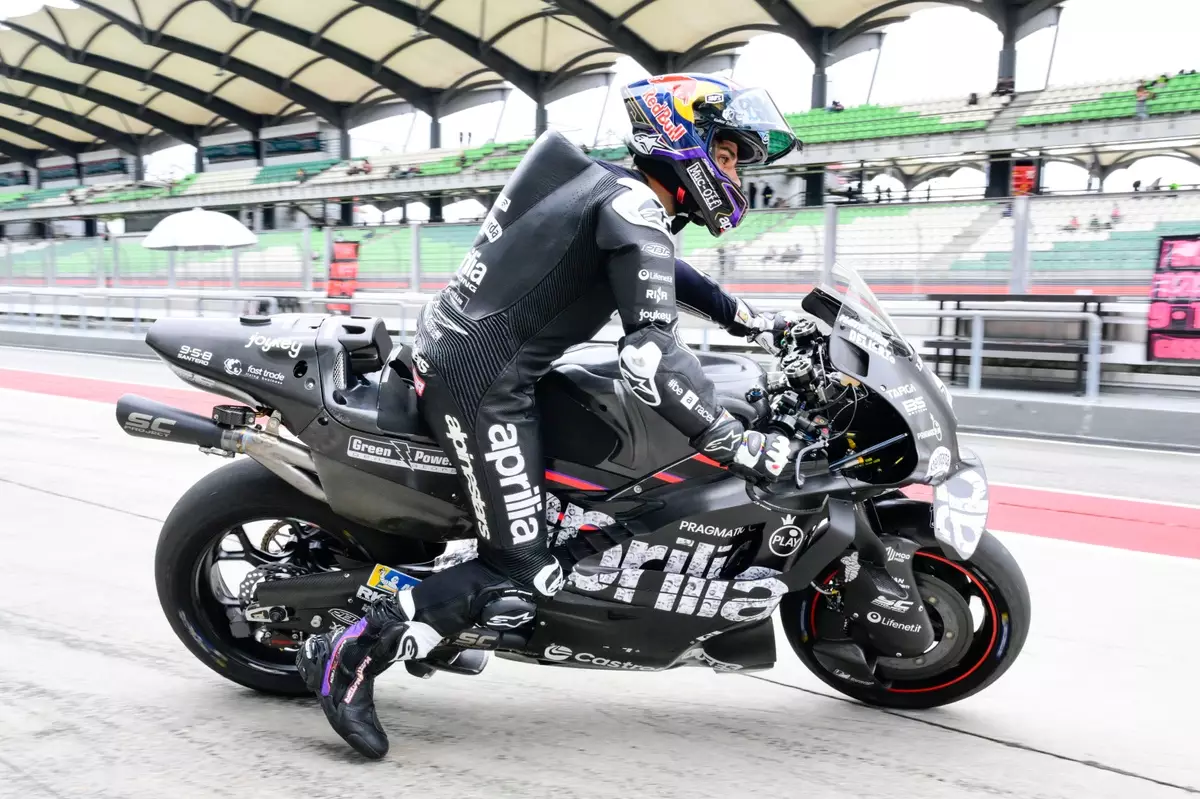The recent high-profile incident involving MotoGP rider Jorge Martin at the Sepang pre-season testing has sparked an intense debate surrounding rider safety and the integrity of tire performance. Martin, the reigning MotoGP world champion, experienced a severe highside that resulted in significant injuries, requiring surgical intervention. His crash has raised critical questions about both the reliability of tires produced by Michelin and the accountability of all parties involved in ensuring the safety of riders on the track.
On the first day of testing in Malaysia, Martin’s mishap occurred under circumstances that Michelin attempted to clarify by citing a chilling of tire temperatures. Specifically, they indicated that a sensor registered Martin’s rear tire at an alarming 15°C lower than expected. This insinuation placed the onus of the crash partially on the equipment rather than on the rider’s performance. However, this explanation has not only been contested by Aprilia but also unveiled a larger discourse on safety protocols within the sport.
Aprilia’s motorsport director, Massimo Rivola, responded vehemently against Michelin’s assessment of the situation. He pointed out that telemetry data indicated Martin’s motorcycle suffered no mechanical faults leading up to the crash. In an assertive statement, Rivola demanded transparency from Michelin regarding the tire’s history, raising concerns that the tire could have been inadequately stored for an extended duration. This questioning highlights the fine line between product reliability and rider accountability within competitive motocross.
Rivola’s insistence on safety being the highest priority resonates across the paddock, amplifying a call for constructive dialogue between tire manufacturers and racing teams. He urged for a collective meeting to review assorted safety concerns exacerbated by the increased incidence of crashes and injuries in the past seasons. His appeal points toward a deeper need for collaboration in the MotoGP community, especially considering the direct implications on riders’ health and safety.
Following the crash, Martin endured considerable injuries, translating to a fractured right hand and multiple fractures in his left foot. The injuries required a medical evacuation back to Barcelona, where he underwent successful surgery at the Quiron Dexeus Clinic. Leading orthopedic surgeon Dr. Xavier Mir performed the procedure to mend the displaced fracture in Martin’s fifth metacarpal, while also confirming that the fractures on his left foot did not necessitate surgical intervention.
As a direct outcome of the incident, questions arise regarding the protocol for rider safety moving forward. The situation places added pressure on Aprilia, as they navigate the risks associated with both their riders and partnerships with tire manufacturers like Michelin. In light of these events, the agility of the medical team to manage rider health post-crash will be scrutinized as well.
Jorge Martin’s crash represents more than just an isolated incident; it calls for a redefining of safety standards in a high-octane environment such as MotoGP. The implications of such accidents can resonate throughout the sport, influencing regulations, tire testing criteria, and the overall approach to rider safety. The debate around the conditions leading to Martin’s crash serves as a wake-up call to re-evaluate the measures in place to protect athletes who consistently push their limits.
The mixed sentiments from the teams, manufacturers, and medical personnel suggest that a comprehensive review is essential. Ensuring that tire efficiency and performance measures align with rider safety will require a renewed framework within which all stakeholders in MotoGP must operate. The aftermath of Martin’s crash may very well encourage systemic changes aimed at reinforcing the safety net for riders, as well as fostering accountability among manufacturers and teams alike.
Jorge Martin’s unfortunate incident at the Sepang MotoGP test fuels an essential dialogue on the safety of motorcycle racing. As Aprilia’s calls for cooperation suggest, the time for change in the approach to rider safety and equipment reliability is now. The health of the sport depends on the capacity of its stakeholders to navigate these challenges together while prioritizing the well-being of its athletes.

